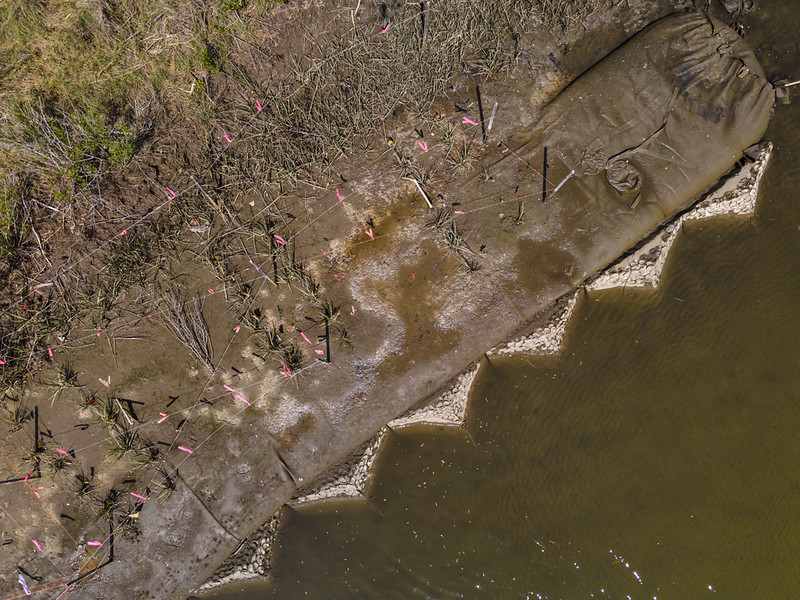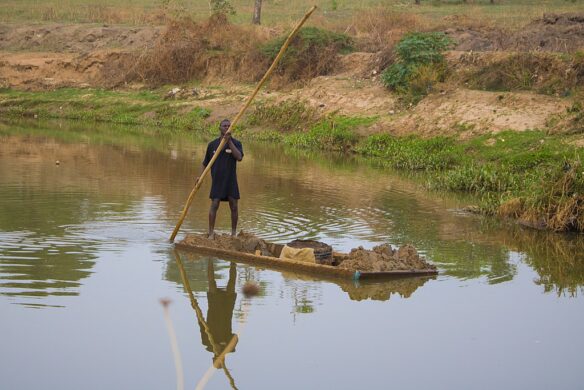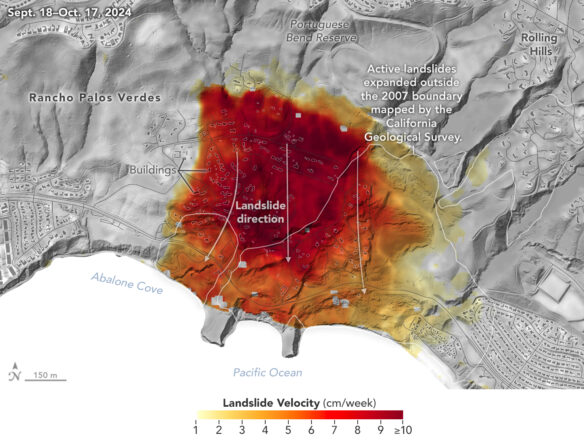Excerpt:
Along the U.S. East Coast, communities are grappling with the dual destructive forces of rising sea levels and stronger storms pushed by climate change, resulting in effects ranging from ‘ghost forests’ of saltwater-killed coastal trees in the Carolinas, to inundations of New York City’s subway system. While the usual response has been to build higher seawalls and other concrete or rock structures, a natural approach that aims to protect coastal areas with natural assets that also create habitat and are generally cheaper and less carbon intensive — ‘living shorelines’ — is increasingly taking hold…
In Maine, where a trio of powerful winter storms recently pummeled the coast, living shorelines designers are in growing demand.
January brought a pair of rough storms to the northeastern U.S. They hit when the tides were high and pushed higher than normal by rising sea levels, setting numerous high-water records and prompting Maine Governor Janet Mills to request a federal disaster declaration. These events, just three days apart, built on damage suffered during another storm during the December 2023 holidays and another during the previous December.
“Extensive” is the word that Peter Slovinsky, a marine geologist for the Maine Geological Survey, chose to describe the most recent damage during an interview with Mongabay. He pointed to an estimate that 60% of Maine’s working waterfronts were severely damaged. “We saw numerous seawall failures and erosion of anywhere between 15 to even up to 30 feet [4.5-9 meters] of coastal sand dunes, and massive bluff failures also,” Slovinsky said.
The common response to busted docks, condemned houses, shrinking shorelines, disappearing dunes and faltering bluffs has been to bolster the shore with ‘hard’ infrastructure like concrete jetties and breakwaters of imported boulders. But those interventions are expensive, carbon-intensive, and ultimately ineffective due to continual sea level rise.
Increasingly, agencies like Slovinsky’s have been experimenting with a more natural and possibly more effective approach called living shorelines. The U.S. National Oceanographic and Atmospheric Administration (NOAA) defines these as “projects that connect the land and water to stabilize shorelines, reduce erosion, and provide valuable habitat that enhances coastal resilience.”
Such projects often take the shape of phalanxes of buried Christmas trees that shore up dunes, mesh bags of shells placed to protect mudflats from erosion, and salt-loving grasses and shrubs planted to stabilize nearshore areas.
Development of living shorelines is widely credited to the late Edgar William Garbisch Jr., a chemistry professor turned wetland restorationist who piloted the approach’s early methods and philosophy during the early 1970s in Chesapeake Bay. The aim is to protect coastal ecosystems like marshes and beaches with natural assets that create habitat while anchoring the shore. This method has gained increasing traction along much of the U.S. East Coast, from Georgia on north, as communities have begun to confront the impacts of human-caused climate change, including worsening storms and sea level rise, which is set to increase a further 0.6-1.2 m (2-4 feet) by 2100.
While Maine’s official experiments with such interventions at places like Popham and Pemaquid beaches have seen varying levels of success among their dunes and marshes, one Belfast area entrepreneur is innovating new ways of leveraging the living shorelines concept to protect another ubiquitous coastal feature: sandy bluffs.
On a cold November morning, contractor Paul Bernacki showed a Mongabay reporter around his latest project site on the Blue Hill Peninsula in Midcoast Maine, where a homeowner had hired him to preserve an eroding bluff along 2,000 ft (610 m) of shoreline. His vision for shoring it up differed greatly from others the property’s owner initially approached: “The engineers and their contractors wanted to kill all the trees on the shore, move the bank back 10 feet [3 m] at the top, and then pile 200 truckloads of rocks all the way around,” he said.
“Their solution to stabilization is to kill nature. Is that technically feasible for the whole coast of Maine?” Bernacki asked…
Ihila Films (2021):
LIVING SHORELINES









